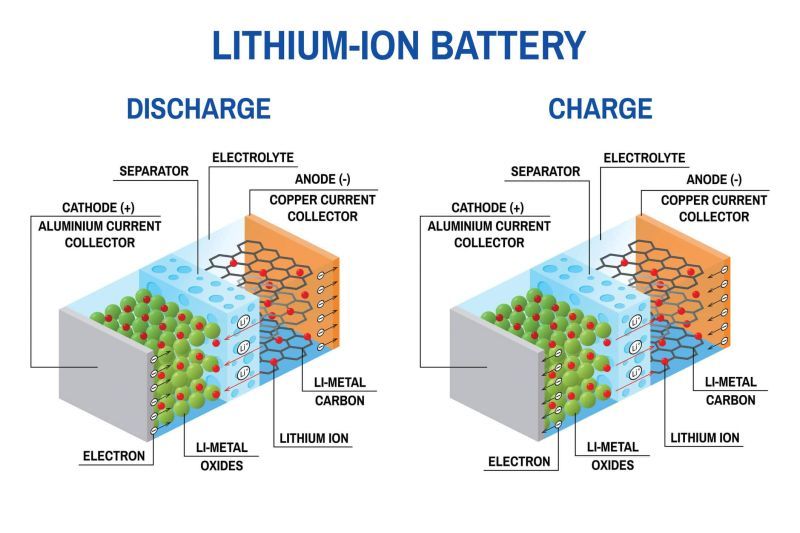News
Why do Li-ion batteries catch fire?
2025-02-19
Li-ion Battery Operation
LIBs have 2 terminals, a positive and a negative one. These terminals are connected electronically to the electrodes inside a Li-ion battery. Inside the battery, we find 2 different electrodes: cathode and anode. When discharging the battery, Li-ions get on their way inside the battery, from anode to cathode. Outside of the battery we have a current during discharge, and electrons move from anode to cathode. Obviously, during charge, Li-ions and electrons take the opposite way. To avoid an internal short circuit, there is a separator between cathode and anode.
Li-ion Battery Types
We will not dive deep into all types and subtypes, but generally we can say that there are different types of Li-ion batteries indeed and we mostly call them by the type of cathode used in the battery. The reason behind is that the anode is based on some sort of carbon in most cases, but cathodes really vary. You may have heard about NMC, LFP, NCA, LMO Li-ion batteries and these abbreviations all define the cathode type. There is one exception: LTO batteries. In this special case, we do not have a carbon-based anode, but an anode based on Lithium-Titanate. Instead of Battery Type, sometimes we use the wording “Battery Chemistry”.
Causes of Li-ion Battery Fires
There are several root causes why Li-ion batteries might catch fire or explode. All of these root causes most likely lead to something that we call thermal runaway.
Thermal runaway is a dangerous chain reaction where an increase in temperature causes further temperature increase, often resulting in a fire. It can be triggered by many types of abuse, such as, but not limited to: overcharging, deep over-discharging and charging again, charging at too high rates (especially critical at low temperatures), discharging at too high rates, crush and other structural damages, external heating, external short. A contamination during manufacturing can also cause a thermal runaway to happen even years later when the battery is in its application. Once thermal runaway starts, it can quickly escalate, causing the battery to combust.
One important point is that Li-ion Batteries do not just catch fire or explode for no reason. But a fire or explosion can happen if something goes wrong.

Awesome! Share to:
Related Posts
- The Energy Transition in 2025: Moving Forward or Falling Behind?
- The Importance of Lithium Battery Welding Machine in the Era of Electric Vehicle Rise
- The U.S. Battery market is about to boom
- The Future of Battery Production: Innovations and Market Trends
- The importance of rolling press machine in lithium battery production line

+86 15254640397
+86 15254640397
Jim@xtzhaoyang.com
Provide you with an integrated solution
24/7 before-sales and after-sales services
Comprehensive technical support
Get in Touch
